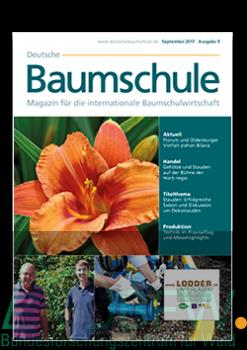
- Standardsignatur11333
- TitelDeutsche Baumschule 2018 : Magazin über die internationale Baumschulwirtschaft
- ErscheinungsortBraunschweig
- VerlagThalacker Medien
- Erscheinungsjahr2018
- MaterialBandaufführung
- Digitales Dokument
- Datensatznummer202469
- QuelleDeutsche Baumschule : Plattform für die internationale Baumschulwirtschaft ; Jrg. 70 (2018)
| Exemplarnummer | Signatur | Leihkategorie | Filiale | Leihstatus |
|---|---|---|---|---|
| 11333180 | 11333 | Zeitschrift | Zeitschriftenmagazin | Ausgeliehen |